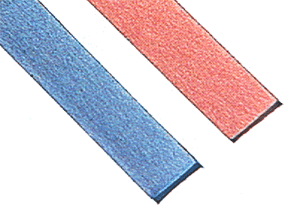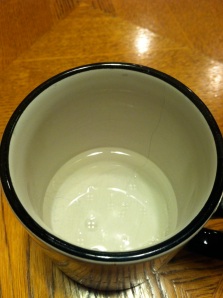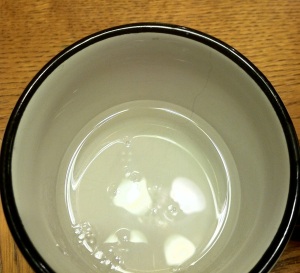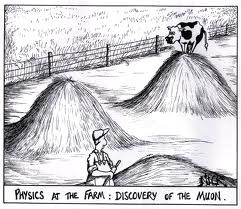Never ask a woman her weight…but her kinetic energy is fine August 2, 2014
Posted by mareserinitatis in math, physics, running, science.Tags: blerch, gravitation, kinetic energy, mass, physics, runners, running, science, velocity
add a comment
Today, I had one of the most awesome runs I’ve ever had. In particular, I sustained a much faster pace than I have over a 3 mile distance.
I couldn’t help but wonder, however, about the factor weight plays in one’s speed. As much as I try not to worry about weight and focus on being healthy, there’s this part of me that thinks it would be cool to lose a bit of weight because then I would go SO MUCH FASTER. Or at least that’s what I tell myself. However, I wondered if maybe I was exaggerating a bit, so I decided to check it out.
While it’s a bit of an oversimplification (that doesn’t take into account muscle tone, lung capacity, hydration, electrolyte levels, altitude adjustment, and the 18 bazillion other things that can affect a runner, even as stupid as that kink that’s still in your neck from last Thursday’s swim (okay, that only affects the triathletes here)), a quick check is to use the kinetic energy equation.
First, of course, we have to assume a perfectly spherical runner. Or a Blerch:
(As an aside, if you don’t know what the Blerch is, you must check out the Oatmeal’s wonderful cartoon on running. We all have a Blerch deep inside of us.) Either way, perfectly spherical things are happy for physicists because of all the lovely simplifications we can use in learning about them. So, if you’re a perfectly spherical runner, remember that physicists will love you.
Anyway, our hypothetical runner will have a mass (m), which is, of course, directly proportional to weight. (Weight, of course, is also referred to as gravitational attraction, so the more you have of it, the more attractive you are, at least from the perspective of the planetary body you’re closest to. Also, it may start to be more attracted to you if your velocity starts to approach the speed of light. Maybe this is why many humans also find runners attractive? Not sure.) The unit of mass is the kilogram. The runner will also have to maintain an average speed velocity (v), and of course your pace is inversely proportional to your velocity. Your velocity is probably measured in miles per hour by your local race, but since we’re being scientific, we could also use SI units of meters/second. That being said, if you double your speed in one unit, it will also double in the other. There’s nothing fancy that happens because you’re using one unit or the other.
The kinetic energy of our runner, assuming an average velocity, can be written as
(1) KE=½ mv2
If we have the kinetic energy and mass, but want to find out the velocity, we first divide both sides of the equation by the mass and then take the square root of both sides. This leaves us with the following result:
(2) v=√(2 KE/m)
Let’s take an example. If we have a runner who has a velocity of 5 mph (or 2.2352 m/s) and a weight of 140 lbs. (or 63.5 kg). If we use SI units to compute this runner’s velocity, it turns out her initial kinetic energy (KEi) is 158.63 J.
On the other hand, we don’t really need to know how much initial kinetic energy the runner has, in terms of numbers. We can just define it as the quantity KEi. It turns out that physicists are kind of lazy about using numbers, so we’ll try to go without them because, in my opinion, it sort of confuses things. (You’ll see why later.)
How this this help us? Well, if you want to take a drastic example, let’s assume a runner loses half of her body weight.
First, let’s establish that her initial kinetic energy is defined also by an initial mass mi and velocity vi. (These would be the same as the 5 mph and 140 lbs. above.) This means her initial kinetic energy can be written as
(3) KEi=½ mivi2
and her initial velocity would therefore be
(4) vi=√(2 KEi/mi).
If her weight drops by half, we can write this as her initial weight divided by 2:
(5) m=mi/2
If we put (5) into our velocity equation (2) as our new mass and keep the same initial kinetic energy, we get
(6) vnew=√(2 KEi/m)=√(2 KEi/(mi/2))=√2*(2 KEi/(mi))=√2√(2 KEi/(mi))
You can see that the last part in six is basically the square root of two times our initial velocity from (3). That means that by losing half her weight, our runner would run about 1.4 times as fast, or 40% faster.
Now what if she only loses 10% of her weight? It turns out that (5) would become
(7) m=mi/1.1
so our new velocity would be the initial velocity times the square root of 1.1, which is about 1.05. Losing 10% of her weight only makes her 5% faster.
After spending time looking at this, I decided that going on a massive diet definitely isn’t going to help me speed up significantly. (In fact, if I manage to go from my current weight to my ideal, I would maybe get a gain of a bit over 1/2 mph.) It’s the fact that the mass doesn’t play as strong a role as velocity does because velocity gets squared and mass doesn’t. If you want to go faster, you are better off practicing running faster.
So please pass the ice cream! I need it for my fartlek recovery.
Beautiful, elegant models March 27, 2014
Posted by mareserinitatis in engineering, geology, physics, research.Tags: engineering, interdisciplinary research, modelling, models, simulations
add a comment
I’m interested in the different uses of the word model. Of course, the most common reference (outside of science and engineering) is to someone who wears expensive clothes. Upon encountering such a model, most of us in the sciences and engineering wonder how they could charge so much for so little fabric.
In science and engineering, however, I’m discovering that I don’t like the use of the word because it’s ubiquitous and therefore nearly useless. The problem I’ve run into is that everyone uses it but not necessarily for the same things. In one field (or to one person), it means the equations describing a phenomenon. In another field, it’s a computational model incorporating those equations in a specific configuration. In yet a third field, it can describe a computational framework. Then there are models that are simple calculations to describe inputs and outputs of a system. And finally, I’ve also heard someone refer to it as a non-quantitative description of a process.
I’m slowly realizing that a model depends on what you and your field emphasize. It’s used to describe an abstraction or an idea of the process, but what you’re describing as a model is extremely dependent on your training.
I think I may go back to using it to describe the walking mannequin.
Curriculum litmus test February 14, 2014
Posted by mareserinitatis in engineering, physics, teaching.Tags: evaluations, learning, students, teaching
2 comments
I received the written comments back on my student evals from last semester. I had a number of students who were very annoyed with the final project. The previous two years, the final project consisted of a Matlab project. After thinking about what a pain that was, I decided to change to a new project: a paper of 10-15 pages that has each student discuss their goals for getting through college. The general consensus among those who commented was that the project required too much work for a 1 credit class. There were several comments about how most of the other sections of this class don’t require as much work as I do, but the paper was just too much.
I’m sort of used to the comments about how much work my class is. I state up front that they can expect 2-3 hours of homework each week…for a 1 credit class (that is, we meet once per week for an hour). I also figure they had better get used to it, given the expectations of many of my colleagues.
I did find the comments slightly disturbing, however, because the implication seems to be that what I’m asking them to do is a lot of busy work. In a lot of classes, many students feel that they’re spending a lot of time doing things that they will never do again outside of college. They’re right, in a lot of cases. I took a ton of math as an undergrad, and Mike likes to tell people that I’ve forgotten more math than he ever learned. Sadly, the longer time goes on, the more I think he may be right.
The class I teach, however, is an academic skills class. This means I am teaching them how to get through school, particularly in the engineering curriculum. Do you know how to take notes? What are the key things that are important? Can you write a lab report? Do you even know what area of engineering you’re going into?!
These are the things I’m trying to teach them. My goal isn’t even to get them through the engineering curriculum, though a lot of the things I assign may be geared that way. I simply want them to get through school and graduate. I tell them this. It perplexes me, therefore, how they can view setting goals as a waste of time.
I really have put a lot of thought into my assignments. I want this class to be useful, and so I ask myself if each activity is something that will help them learn a skill they’ll need to get through school. In a lot of ways, I’m at an advantage: college is a very constrained environment, and I can tell what skills are useful until they graduate. After they graduate and get a job, however, their classwork may or may not be very valuable. It’s something that simply can’t be predicted.
I have had students come back to me and say that they are really glad I taught the class and they do use the skills that I taught them. I’m just not sure, however, how to make it clear to the freshman in my class that I really am not trying to torture them and that I do want them to succeed. I can only hope the ones complaining about writing their goals are so motivated and driven that a lack of clearly stated goals has absolutely no bearing on their performance in school over the next 3 1/2 years.
99 bottles of…oops January 28, 2014
Posted by mareserinitatis in education, physics, science.Tags: boy scouts, pascal's law, physics, science, Scientists, teaching, video
add a comment
Yesterday, I was helping guide some cub scouts (specifically webelos) through their scientist achievement. One of the things we had to discuss was Pascal’s law. Unfortunately, the instruction set on this was pretty limited: read and discuss. That, to me, means they likely wouldn’t understand it at all, so I felt like a demo was in order.
I decided to demonstrate the pressure change in a beer bottle. The concept is simple: fill an empty bottle with a non-compressible fluid (so water works, air won’t) and tap on the open end with a rubber mallet or even your hand. Of course, you want to do this over a bucket because the sudden change in pressure causes the bottle to break at the weakest point, usually the seam along the bottom, and spill it’s contents.
I did this demo for the first time in front of the kids. (I had ONE bottle of beer. No, I didn’t imbibe in front of them…I used it to bake bread.) It worked like a charm. If I didn’t trust physics so much, I wouldn’t have been okay trying it cold like that.
If you don’t have a beer bottle handy and would like to see this demo, there’s a good video on YouTube:
There are four lights! January 27, 2014
Posted by mareserinitatis in physics, science.Tags: lenses, optics, physics
1 comment so far
It’s hard being a physicist. Pretty much every place you look, you’re seeing some cool physical phenomenon that just screams, “Newton (or some other dead guy) discovered me!” If you’re lucky, the screaming isn’t followed by an apple hitting you on the head. Unless you’re a Klingon who is reciting love poetry; then that might be lucky.
Anyway, one such event occurred when I was looking into my coffee mug, which happened to be filled with hot water and a touch of coconut oil for flavor (and medium-chain triglycerides). Some bubbles were sitting there on the surface, breaking up the layer of oil, and behaving like a lens. There was an interesting image on the bottom of the cup, which you can see below.
As you can see, underneath each bubble, there appears to be something that almost looks like a four on a six-sided die. It took me a second to figure out what was going on. Then I realized that, directly above me, were four lights. If I shift my angle, you can see them quite clearly in the reflection, though the one on the bottom left is partially blocked by my phone.
This was surprising to me because this lamp is newly installed. Our previous lamp in this room had only one light. It took me a bit to realize that this was why I was so surprised to see an image in the bottom of my cup: it really was something new.
Assume a perfectly spherical circuit November 15, 2013
Posted by mareserinitatis in engineering, physics, research.Tags: interdisciplinary research, perfectly spherical cows, violence
2 comments
It’s very fun having an interdisciplinary workplace and background. Last week, I was finishing up some work while a couple colleagues were discussing a problem. One was a physicist, and the other was an electrical engineer. They were arguing about how to determine some value when the physicist piped up with, “Just assume the widgets are ideal.”
I was trying hard to mind my own business, but it was too much: I burst out laughing. Loudly. It’s probably a good thing because they both stopped and looked at me before anything came to blows.
To get to the other side… September 30, 2013
Posted by mareserinitatis in education, engineering, geology, older son, physics, teaching, younger son.Tags: humor, jokes, physics, students, teaching
3 comments
Those of you who are friends with me on Facebook may remember that I compiled a whole series of physics jokes. I was posting them daily for about two months. Some people loved them. I think a bunch of people also unfriended me because of it.
When I did this, I had an ulterior motive in mind: I wanted to tell them to my classes. I’ve found that students tend to listen better to teachers they think are likable. Unfortunately, I just don’t have the warm, fuzzy personality that many of my friends (particularly those in geology) have. I come across, sometimes, as a mean, nasty type.
And so the jokes…
They really do work. Students will loosen up and talk. They relax a bit. They smile. And most important, they don’t think I’m out to get them. Those endorphins do wonders.
The problem I’m having now is that so many of my jokes are physics related…and I’m teaching freshmen. While they all know about atoms and noble gases and protons, electrons, and neutrons, many of my jokes cover more esoteric topics. They give me blank stares when I talk about Heisenberg or Schroedinger or neutrinos…
There’s a part of me that would like to teach older students simply so that I have a more receptive audience. Or maybe my problem is that I’m teaching engineers and not physicists. Or maybe too many of them are from farms (see above comic).
But you, my dear reader, are a more receptive audience, right? And my kids…my kids know what neutrinos are…kind of. Maybe they’re just laughing at me because I sound funny when I talk about physics.
Incidentally, the punchline to the joke in the title, if you’re wondering, is, “Why did the tachyon cross the road?”
Friday fun: The best videos I’ve seen this week September 20, 2013
Posted by mareserinitatis in Friday Fun, physics, science.Tags: a capella science, Bill Nye, dancing, nina davuluri, physics, video
4 comments
In hearing about all the racism that surfaced regarding Nina Davuluri, I heard someone mention she’d done a Bollywood dance for her performance. I had to check it out, and I have to admit that I’m very impressed. Her kneeling spins are something else.
I wasn’t nearly as impressed with Bill Nye’s cha cha on Dancing with the Stars, but you have to admit it’s kind of cute (if a bit stereotyped).
And speaking of science and music (but not dance), I also came across this wonderful remake of Queen’s Bohemian Rhapsody called Bohemian Gravity. I think this one is my favorite this week…it combines some pretty amazing talent with really amazing physics.
Whistle while you work September 12, 2013
Posted by mareserinitatis in humor, physics.Tags: braces, life of brian, monty python, whistling
2 comments
I’m not a big whistler, but every once in a while the mood hits me. Yesterday after seeing this (it’s about the ‘new’ trailer for Monty Python and the Holy Grail), my mind travelled to The Life of Brian and, inevitably, this song:
It’s one of those annoyingly catchy (and yes, totally absurd) songs. While it was burrowing its way through my brain, I started whistling. Except, I discovered I couldn’t.
As some of you may recall, I had orthodontic work done and finally had my braces taken off last spring. While wearing braces, I don’t imagine I tried whistling at all because whistling with braces is pretty much a futile exercise. However, after having all my teeth moved around, I discovered that however I had learned to whistle before no longer works.
In order to whistle (at least the way I do it), one holds the lips in such a way to allow a stream of air to pass through. The stream is disrupted slightly by the lips and teeth, causing the air to vibrate. Then you can move your tongue around in your mouth to change the frequency of the resonance, which will change the pitch of the whistle.
It sounds easy, right? Except that with my teeth in a different position, I can’t seem to get that vibration there. Everything is in a new spot, so I’m not sure how to place my lips.
The end result is that I’m trying to sing, “Always look on the bright side of life,” which is so darn cheerful because of the whistling, and I can no longer whistle. Despite the song’s mandate, I found myself a hair depressed…





 I also blog at Engineer Blogs, home away from home to some of the best engineering blogs.
I also blog at Engineer Blogs, home away from home to some of the best engineering blogs.
A filtered education March 3, 2014
Posted by mareserinitatis in education, homeschooling, math, older son, physics, science, societal commentary, teaching, younger son.Tags: light, older son, physics, science, science education, teaching, younger son
add a comment
The older son is a lot of fun. Despite his statements that he has no desire to go into science, he seems to get and make a lot of science jokes. I know he’s not a scientist, but I feel comfortable that he’s scientifically literate. As he was homeschooled, I’m feeling pretty proud of myself.
I’m more anxious about the younger son, though. This weekend, he brought home his science homework, which focused on optics. The kids were studying filters, and one of the questions asked about what kind of light would you see if you shined a flashlight through a blue filter and then a red one. I asked him what he saw, and he said nothing. Unfortunately, he was told that he saw nothing because the flashlights just weren’t bright enough, but that what he should have seen was purple.
I’m pretty sure that if I had ever been bombarded with gamma rays in the past, I would’ve turned into She-Hulk at that very moment and started smashing things. Fortunately (or unfortunately, if being She-Hulk happens to be a goal of yours), that didn’t happen.
I find it infuriating that, throughout my years of homeschooling older son and teaching younger son math, I have constantly been questioned about my ability to teach them. The implication has always been that I may have a degree, but they are experts on teaching. In fact, this particular teacher attempted to take me to task earlier this year about the younger son’s math curriculum…the same teacher who apparently doesn’t understand that light and pigments work completely differently.
After I managed to calm down, I explained that light filters are like sieves, except that they only let one size of particle pass through: nothing bigger can pass through the holes, but nothing smaller can, either. After this explanation, the younger son was able to correctly explain that the reason he saw no light from his flashlight is that the two filters together had blocked all the light.
I’m going to be watching very carefully to see what kinds of scores he’s getting on his answers and whether the teacher realizes she made a mistake. This was very disappointing. There was a new science curriculum introduced this year, one which I was very excited about. The focus was supposed to be on hands-on, problem-based learning, which is great for science. Despite that, it seems that younger son’s science education may be lacking. What good does it do to have a top of the line science education curriculum (or math…or anything else) when our teachers don’t understand what they’re teaching? And how is it that these same teachers can justify questioning the ability to teach material that some of us understand far better than they do?